What is stagflation, explained — and whether the crisis may return for the first time in 40 years
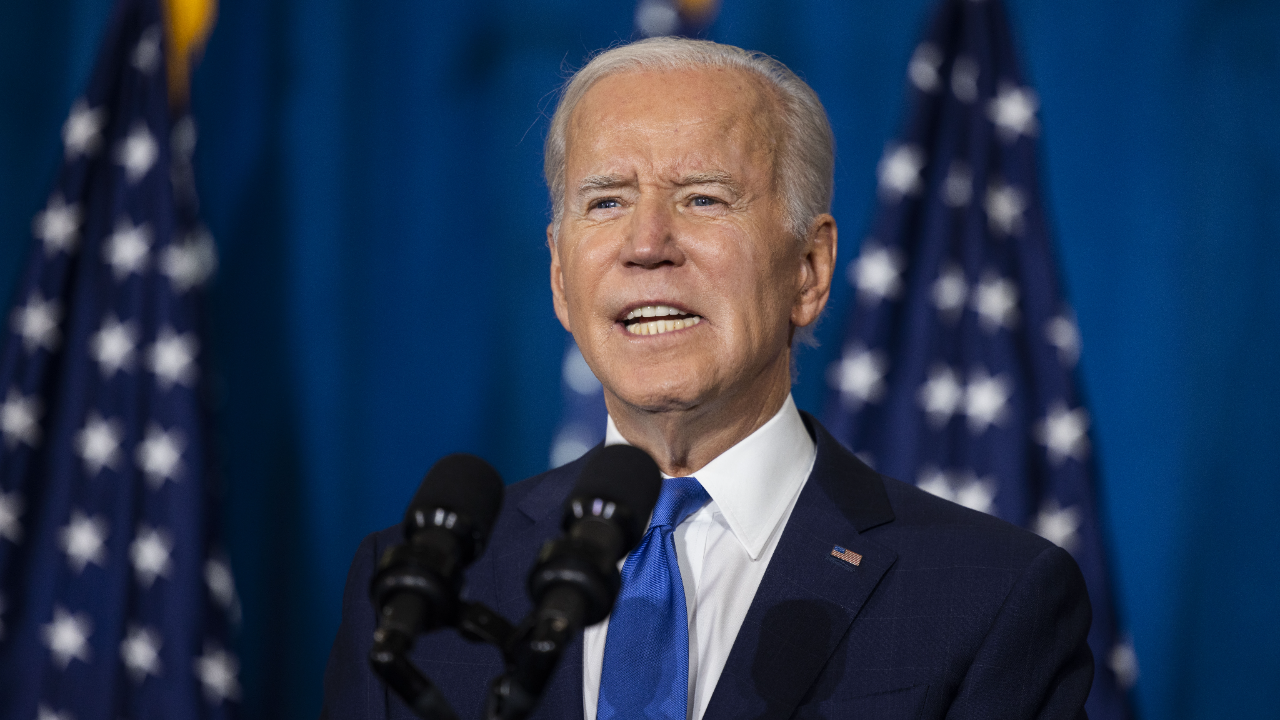
The Bankrate promise
At Bankrate we strive to help you make smarter financial decisions. While we adhere to strict , this post may contain references to products from our partners. Here's an explanation for .
Consumers, investors and economists alike aren’t just worried about inflation this year — but also that even a recession won’t be able to cure it.
Together, three economic enemies — rising unemployment and prices along with a slowing economy — combine to form “stagflation,” a major supervillain that hasn’t made its way into the American lexicon since the 1970s and ‘80s.
Former Fed Chair Ben Bernanke said in a May 16 interview with The New York Times that the economy could face stagflation this year, as prices rise at the fastest pace in four decades and the Federal Reserve aggressively hikes interest rates.
The higher interest rates climb, the more of a concern it’s becoming, especially as inflation doesn’t look like it’s slowing down completely. Cooling gasoline prices have helped to take the edge off of inflation, but prices are heating up in key areas of rent, housing and medical care despite 3.75 percentage points of rate hikes so far this year.
“It might already be the case that some individuals and households feel like they’re experiencing something akin to stagflation right now if they’re not seeing income or wage gains sufficient to keep pace with rising prices,” says Mark Hamrick, Bankrate senior economic analyst.
But the concept is complicated, and not all inflation leads to stagflation. It’s also a mysterious condition in itself, defying how economists think the financial system usually works. Here’s what you need to know about stagflation, including how it works and how you can prepare for it.
What is stagflation?
Stagflation happens when growth slows, demand falters, unemployment rises — and almost contradictorily, inflation keeps climbing.
That’s out of the ordinary because joblessness doesn’t typically bode well for growth, and when demand takes a nosedive, so can inflation. Businesses likely push back investments; consumers are either spending less or have limited amounts of money to fund their purchases. Such concepts are at the heart of the popular theory known as the “Phillips curve,” which suggests that as unemployment falls, inflation should rise, and vice versa.
But not in a stagflationary environment. Joblessness and inflation were both on the rise at similar points throughout the ‘70s and ‘80s, the last time experts say the economy faced a bout of stagflation. On a chart, their peaks and valleys often follow the same progression.
In May 1975, joblessness peaked at 9 percent. Just six months earlier, price increases peaked at 12.2 percent in November 1974. Both would remain elevated until the early ‘80s, when the Federal Reserve essentially manufactured a recession and intervened by raising interest rates.
“Stagflation is sort of the worst of both worlds,” says John Leer, chief economist for Morning Consult, a global intelligence company. “You get elevated inflation combined with no growth, a period of time where incomes are not growing as fast as prices, spending patterns dramatically slow down, businesses stop investing. And all the while you see elevated inflation continuing to erode the real, inflation-adjusted economic output.”
What causes stagflation?
Very specific ingredients go into this recipe for disaster, and a prominent one likely sounds familiar given what’s happening in light of the coronavirus pandemic and Russia’s invasion of Ukraine — supply shocks.
At their basic nature, supply disruptions are stagflationary. If a fast-spreading strain of the bird flu affects a substantial portion of the chicken population, for example, that shortage could raise prices on eggs and meat just as much as it could reduce production and weigh on employment. That’s been the case with today’s semiconductor chip shortages, which have pushed up car prices because they’ve limited production.
Supply shocks were another feature of the ‘70s, when an oil shortage prompted by an embargo abroad caused prices to nearly quadruple.
“People often go back and start looking at what happened in the 1970s with the oil crisis,” Leer says. “Supply-side shocks drive prices up but at the same time prevent continued economic growth.”
What’s dangerous about those kinds of spikes, however, is that they can go on to affect other corners of the economy. When oil is more expensive, it doesn’t just become costlier to heat up homes or fill up cars with gasoline. Goods and services that require a lot of energy can also get more expensive. Supermarkets can pass along higher shipping costs; taxi services can add gasoline surcharges. All of that highlights the stickier nature of inflation.
Those supply shocks are also often what causes unemployment to counterintuitively rise when inflation is also high. Supply shortages reduce the productive capacity of an industry, leading to fewer jobs in that sector as well as higher prices.
And inflation alone isn’t enough to cause stagflation, experts say. A large part of why is because price pressures left to their own devices can often be self-correcting. They can inspire consumers to pull back on purchases.
“As the saying goes, the cure for high prices is high prices, and demand will likely adjust over time,” Hamrick says.
That’s where other forces come into play to create the perfect storm, one of which is price instability. Even if inflation is high, businesses might be able to better strategize how to eat those costs if they knew where they were heading. Volatile inflation, however, makes planning more challenging.
In 1973, for example, consumer prices rose by an average 3.3 percent. By 1974, however, they averaged 11 percent and sank to 5.8 percent in 1976 — only to again climb to 13.5 percent in 1980.
Making matters worse, consumers and businesses notice when inflation is unstable. The longer it goes on, the bigger the risk that they see it as a facet of American life. Economists have long argued that expectations for higher inflation can be a self-fulfilling prophecy. Workers can ask for higher pay; businesses and consumers might front-load many of their big-ticket purchases with the fear that prices will only keep going up.
An important intermediary is the Federal Reserve. By acting tough with monetary policy and committing to cooling inflation, officials can extinguish the flame before it becomes a larger forest fire.
But Fed historians argue the Fed wasn’t tough enough in the ‘70s and ‘80s. Too-loose monetary policy contributed to the high inflation levels of the era, they say — not just because low rates kept fueling growth but also because it made Fed watchers question whether officials were truly serious about bringing inflation back down.
“It does depend on the credibility of the central banks,” Morning Consult’s Leer says. “We see mixed signals from financial markets, and our high-frequency data continues to show growing inflation expectations, so that’s fairly concerning.”
Is stagflation going to happen?
Even though the Fed is left having to counteract supply shocks it has no control over, monetary policy will be key to keeping history from repeating itself. Fed Chair Jerome Powell said in a May public appearance U.S. central bankers won’t hesitate to keep hiking interest rates until inflation falls, messages he later repeated in August at a key monetary policy symposium as well as officials’ September rate-setting meeting.
The Fed has hiked interest rates the most in a single year since the 1980s, and it’s helped send borrowing costs to levels consumers haven’t seen in years. Mortgage rates surged to 7.12 percent as of Oct. 26, the highest since 2002, while home equity lines of credit are at a 14-year high, according to Bankrate data. Car loans, meanwhile, are at 11-year highs.
The question, however, is when that could start to pop inflation. The true test will be in consumer demand. Consumer spending rose 0.4 percent in the third quarter, down from 0.5 percent increase in the prior quarter, according to the Department of Commerce. The bedrock of the economy, consumption is nowhere near as robust as it was in 2021, though the report suggested there’s still modest momentum.
Even the labor market has proved resilient to the Fed’s rapid increase in rates. Employers have had more than 10 million job openings for a year and four months, adding 437,000 new job openings in September after slashing 890,000 in the prior month.
Noticing stagflation could also be difficult at a time when just 3.5 percent are unemployed, a half-century low. Powell has described today’s job market as tight “to an almost unhealthy level,” meaning a slight uptick in joblessness might be good to help alleviate inflation.
But if unemployment rises 0.5 percentage points, it will have fulfilled a long-running economic theory that signifies when the economy is in a recession, known as the “Sahm rule.” Even so, a 4 percent unemployment rate would still be among the lowest rate since the late ‘60s.
Economists in Bankrate’s Third-Quarter Economic Indicator poll see joblessness rising to 4.4 percent by October 2023.
There won’t be an economic litmus test per se to measure whether stagflation is occurring. Another way of looking at it could be that there could or would be differing degrees or flavors of stagflation.
— Mark HamrickBankrate senior economic analyst
4 ways to prepare for possible stagflation
Whether or not the experts want to call it stagflation, that debate might not matter for your wallet. Periods of high inflation, reduced demand for workers and slowing growth can hurt your money, and preparing is the best way to protect your money.
1. Take advantage of today’s strong job market while you still can:
Even with the prospect of growth slowing, businesses still have a historic amount of demand for workers. Take advantage of that power by negotiating for a raise or hunting for a new position. Data suggests that job switchers see bigger pay gains, though they might also feel less job security — especially if they hop to a new company during a slowdown.
2. Craft a budget
High inflation makes it all the more crucial to evaluate where your money is going each month. Take a careful look at your finances, track your spending and compare that with where prices are rising the most. Having an understanding of your own personal inflation rate can help you avoid purchasing items that are inflated, freeing up crucial amounts of cash.
3. Plan for emergencies
Use that freed up cash to start adding to an emergency fund. Experts typically recommend building up an ample cushion of cash worth at least six months’ of your expenses, though any little bit could help in a period of joblessness. Don’t be afraid to start small and automate your savings.
4. Think about your bear-market strategy
No investor likes to stomach losses — especially if that money is going toward your retirement or a long-term goal. But in times of severe market volatility, it’s important to avoid overreactions. Avoid the urge to sell off your holdings, diversify your investments and remember that the average bear market lasts around 15 months, according to the Schwab Center for Financial Research.
Related Articles
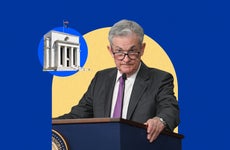
Will stubborn inflation force the Fed to raise interest rates again?
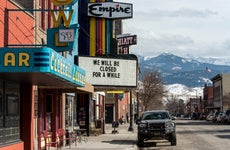
Is the U.S. economy in a recession or depression? Here’s what top economists say
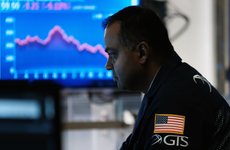
What is a recession? Why the most horrifying term in economics isn’t what you always think
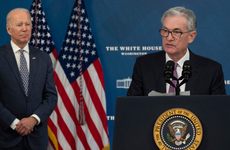
The worst inflation in 40 years: Here’s when price pressures could hit their peak